#leslie kay
Text
happy pride reccing some anti-assimilationist, anti-capitalist, and abolitionist books and texts
BOOKS
Why Are Faggots So Afraid of Faggots? edited by Matilda Bernstein Sycamore (2012)
"Whatever happened to sexual flamboyance and gender liberation, an end to marriage, the military, and the nuclear family? As backrooms are shut down to make way for wedding vows, and gay sexual culture morphs into "straight-acting dudes hangin' out," what are the possibilities for a defiant faggotry that challenges the assimilationist norms of a corporate-cozy lifestyle?"
Transgender Liberation: A Movement Whose Time Has Come by Leslie Feinberg (1992)
This pamphlet is an attempt to trace the historic rise of an oppression that, as yet, has no commonly agreed name. We are talking here about people who defy the ‘man’-made boundaries of gender.
Transgender Warriors: Making history from Joan of Arc to Dennis Rodman by Leslie Feinberg (1996)
[Leslie Feinberg's] book celebrated the resistance to transphobia and a vision of trans liberation articulated from the perspective of class struggle. It understood that no liberation from transphobia or any of the divisive and violent oppressions in class society is possible without the transformation of capitalism into socialism.
The Faggots & Their Friends Between Revolutions by Larry Mitchell (1977)
Stories told of these times make the faggots and their friends weep. The second revolutions made many of the people less poor and a small group of men without color very rich. With craftiness and wit the faggots and their friends are able to live in this time, some in comfort and some in defiance.
Also this interview
Gender Outlaws: The Next Generation edited by Kate Bornstein, and S. Bear Bergman (2010)
Today's transgenders and other sex/gender radicals are writing a drastically new world into being.
Made In India: Decolonizations, Queer Sexualities, Trans/National Projects by Suparna Bhaskaran (2004)
Made In India explores the making of "queer" and "heterosexual" consciousness and identities in light of economic privatization, global condom enterprises, sexuality-focused NGOs, the Bollywood-ization of beauty contests, and trans/national activism.
That's Revolting: Queer Strategies For Resisting Assimilation edited by Matilda Bernstein Sycamore (2008)
As the growing gay mainstream prioritises the attainment of straight privilege over all else, it drains queer identity of any meaning, relevance or cultural value.
How To Blow Up A Pipeline by Andreas Malm (2021)
Malm argues that sabotage is a logical form of climate activism, and criticizes both pacifism within the climate movement and "climate fatalism" outside it.
On Connection by Kae Tempest (2020)
On Connection is medicine for these wounded times.
Are Prisons Obsolete by Angela Y. Davies (2003)
If you know anything about Angela Davis—anti-racist activist, Marxist-feminist scholar—you know that her answer to the question posed in the title is "Yes." This is a short primer on the prison abolition movement
Becoming Abolitionists: Police, Protests, and the Pursuit of Freedom by Derecka Purnell
This profound, urgent, beautiful, and necessary book is an invitation to imagine and organize for a less violent and more liberatory world.
Black Marxism by Cedric Johnson (1983)
Influenced by many African American and Black economists and radical thinkers of the 19th century, Robinson creates a historical-critical analysis of Marxism and the Eurocentric tradition from which it evolved. The book does not build from nor reiterate Marxist thought, but rather introduces racial analysis to the Marxist tradition.
The Transgender Issue: An Argument For Justice by Shon Faye (2021)
[Shon Faye] provides a compelling, wide-ranging analysis of trans lives from youth to old age, exploring work, family, housing, healthcare, the prison system and trans participation in the LGBTQ+ and feminist communities, in contemporary Britain and beyond.
Burn The Binary: selected writings on the politics of being trans, genderqueer, and non-binary by Riki Wilchins (2017)
This single volume offers a selection of Riki’s most penetrating and insightful pieces, as well as the best of two decades of Riki’s online columns for The Advocate never before collected, from "Where Have All the Butches Gone," to "Attack of the 6-Foot Intersex People"
ARTICLES
Assuming The Perspective Of The Ancestor by Claire Schwartz (2022)
Philosopher Olúfẹ́mi O. Táíwò on building constructive, future-oriented politics, at scale.
The Gender Binary Is A Tool For White Supremacy by Kravitz Marshall (2020)
A brief history of gender expansiveness - and how colonialism slaughtered it
Meet Chris Smalls, the man who organized Amazon workers in New York By Anna Betts, Greg Jaffe, and Rachel Lerman (2022)
The fired worker and former rapper did what nobody else has done in the U.S.
The Nuclear Family Was A Mistake by David Brooks (2020)
The family structure we’ve held up as the cultural ideal for the past half century has been a catastrophe for many. It’s time to figure out better ways to live together.
Universal basic income seems to improve employment and well-being by Donna Lu (2020)
Extinction Isn’t the Worst That Can Happen by Kai Heron (2021)
"This brings us to the third problem with eschatological framings of the climate crisis: they overlook the fact that for many, the end of the world has already happened. In October last year, Nemonte Nenquimo, a Waorani woman, mother and leader, wrote a desperate letter to the western world reminding us that for Indigenous peoples, “the fires are raging still”."
MISC
Manifesto: An Aromantic Manifesto by yingchen and yingtong
free to read
their tumblr (with further resources)
Essay: I Dream Of Canteens by Rebecca May Johnson (2019)
There is a space for everyone. A space, a glass of water, and a plug socket.* Chairs and tables and cleaned toilets. So many chairs so that no one is without one.
Acceptance Speech (video and text): The National Book Foundation Medal for Distinguished Contribution to American Letters speech by Ursula Le Guin
Hard times are coming, when we’ll be wanting the voices of writers who can see alternatives to how we live now, can see through our fear-stricken society and its obsessive technologies to other ways of being, and even imagine real grounds for hope.
And here's a video to cleanse the soul: bell hooks: Transgression
bell hooks & Gloria Steinem at Eugene Lang College
#happy pride#leslie feinberg#ursula le guin#bell hooks#kate bornstein#queer literature#trans literature#marxist literature#black literature#political lit#andreas malm#rebecca may johnson#kai heron#kae tempest#matilda bernstein sycamore#angela davies#shon faye#riki wilchins#larry mitchell#s bear bergman#Suparna Bhaskaran#derecka purnell#cedric johnson#Olúfẹ́mi O. Táíwò#chris smalls#yingchen#yingtong#if anyone has anything from outside america or the uk (there are a few but not a lot here) + more on disability activism +#more on intersex activism#i haven't read *fixing sex* yet so dunno if it fits this exact list
1K notes
·
View notes
Text

The Mummy's Curse (1944)
#the mummy's curse#lon chaney jr.#kay harding#virginia christine#martin kosleck#1940s movies#1944#1940s horror#leslie goodwins#universal monsters#universal horror#classic horror#horror movie poster
45 notes
·
View notes
Text

Leslie Howard and Kay Francis In Michael Curtiz’s BRITISH AGENT (1934)
35 notes
·
View notes
Text
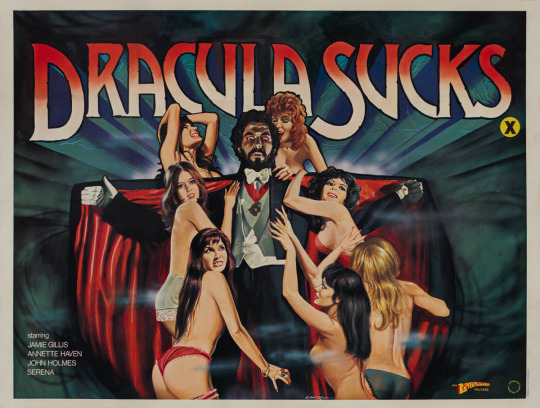
Dracula Sucks (1978)
Dir: Phillip Marshak
Starring: Jamie Gillis, Serena, John Holmes, Annette Haven.
#adultmovies#vintage#golden age of adult cinema#70s movies#jamie gillis#serena#john holmes#annette haven#Paul Thomas#john leslie#kay parker#Mike ranger#movie podcast#movie review
148 notes
·
View notes
Text

Picture Play, October 1935
#old hollywood#1930s#30s#1935#ruby keeler#mae west#kay francis#ginger rogers#norma shearer#clark gable#dick powell#fred astaire#ronald colman#robert montgomery#leslie howard#old movies#black and white#vintage#picture play#old magazines#magazines
51 notes
·
View notes
Text

Kay Harding-Lon Chaney Jr. "La maldición de la momia" (The mummy´s curse) 1944, de Leslie Goodwins.
15 notes
·
View notes
Text
'The key word in Christopher Nolan’s “Oppenheimer” is “compartmentalization.” It’s a security strategy, introduced and repeatedly enforced by Col. Leslie R. Groves (Matt Damon) in his capacity as director of the Manhattan Project, which is racing to build a weapon mighty enough to bring World War II to an end. In Groves’ mind, keeping his various teams walled off from one another will help ensure the strictest secrecy. But J. Robert Oppenheimer (Cillian Murphy), the brilliant theoretical physicist he’s hired to run the project laboratory in Los Alamos, N.M., knows that compartmentalization has its limits. The success of their mission will hinge not on isolation but on an extraordinary collaborative synthesis — of physics and chemistry, theory and practice, science and the military, the professional and the personal.
In the weeks since “Oppenheimer” opened to much critical acclaim and commercial success, Groves’ key word has taken on an unsettling new meaning. Compartmentalization, after all, is a pretty good synonym for rationalization, the act of setting aside, or even tucking away, whatever we find morally troubling. And for its toughest critics, many of them interviewed for a recent Times piece by Emily Zemler, “Oppenheimer” compartmentalizes to an outrageous degree: In not depicting the atomic bombings of Hiroshima and Nagasaki, they argue, the movie submits to a historical blindness that it risks passing on to its audience. Nolan, known for crafting fastidiously well-organized narratives in which nothing appears by accident, has been taken to task for what he chooses not to show.
Most of those decisions, of course, flow directly from his source material, “American Prometheus,” Kai Bird and Martin J. Sherwin’s authoritative 2005 Oppenheimer biography. With the exception of one key narrative thread, everything onscreen is framed, per biopic convention, through its subject’s eyes. And so you see Oppenheimer as an excitable young physics student, and you behold his eerie, captivating visions of the subatomic world. You see him become one of America’s leading physicists, take a major role in the secret race to the A-bomb and, together with his recruits, devise and build the world’s first nuclear weapons. You see his shock and awe when the Trinity test proves successful, lighting up the desert sky and landscape with a blinding flash of white and a 40,000-foot pillar of fire and smoke.
What you don’t see — because Oppenheimer doesn’t see them either — are the bomb’s first victims: the thousands of New Mexicans, most of them Native American and Hispanic, who dwell within a 50-mile radius of the Trinity test site and whose exposure to radiation will have deadly health consequences for generations. You don’t see the bombs being dropped on Hiroshima and Nagasaki; you don’t see the lethal conflagrations and ash-covered rubble, and you don’t see the bodies of Japanese victims burned beyond recognition, or hear the screams and wails of survivors. (Estimates place the eventual death toll at close to 200,000.)
In refusing to visualize these horrors, is Nolan showing admirable dramatic restraint or committing unforgivable sins of omission? Is he merely sticking to his subject’s perspective or conveniently dodging the kind of imagery that would trouble Oppenheimer’s conscience?
As it happens, the scientist does in fact see that imagery, and his conscience is duly troubled. In one key scene, the camera studies Oppenheimer and his colleagues as they watch disturbing footage of the bombings’ aftermath. An offscreen speaker describes how thousands of Japanese civilians were incinerated in an instant, while thousands more died excruciating deaths from radiation poisoning. You see Oppenheimer recoil, even if what he recoils from is left pointedly out of frame.
These are not the only images of WWII that the movie withholds. It’s a measure of the formal and structural rigor of “Oppenheimer” that we see nothing of the Pacific theater conflict, and nothing of the European theater conflict, either — not even when Oppenheimer fears that the Nazis might be building a nuclear weapon of their own. Nolan, who always trusts us to keep up with his elaborately constructed puzzle-box narratives, also trusts us to know a thing or two about history. And crucially, he wants to open up a different perspective on the war, to show how some of its most crucial tactics and maneuvers played out not on battlefields but in classrooms and laboratories — and, finally, in the theater of Oppenheimer’s mind.
We are sometimes told, in matters of art and storytelling, that depiction is not endorsement; we are not reminded nearly as often that omission is not erasure.
It’s a brilliant mind, to say the least. It’s also ill prepared for the terrifying, world-altering reality that it ushers into being. Oppenheimer may see footage of Hiroshima and Nagasaki, but images are a poor substitute for reality; he will never walk among the ruins, witness the despair of the survivors or behold the devastation up close. Nolan knows that we can’t either. What’s more, he clearly believes that we shouldn’t be able to.
Seen in this light, the director’s refusal to thrust his camera onto Japanese soil, far from being an act of historical vagueness or obliviousness, instead represents a carefully thought-out, rigorously executed solution to the problem of how to represent history. And his solution speaks not to his insensitivity but his integrity, his refusal to exploit or trivialize Japanese suffering by re-enacting it for the camera. Nolan lays the groundwork in one of his most revealing scenes, shortly before the decision is made to target Hiroshima and Nagasaki. As Oppenheimer looks on, U.S. Secretary of War Henry L. Stimson (James Remar) removes Kyoto from the list of potential targets, citing the city’s cultural and historical significance and fondly recalling that he and his wife honeymooned there years earlier.
Before the bombings have even taken place, Nolan, in this one scene, indicts the arbitrary callousness of a U.S. war machine that cloaks its destructive intentions in cultural high-mindedness and rank sentimentality. It’s an appalling moment, and Stimson unambiguously solicits Oppenheimer’s contempt as well as the viewer’s; watch that scene in a packed house and you’ll hear the audience scoff as one. You might also begin to suspect, if you haven’t already, that Nolan isn’t going to dramatize the bombings in straightforward fashion, if he means to dramatize them at all.
Nolan has never been turned on by spectacles of violence. Even “Dunkirk,” a harrowing if ultimately optimistic World War II bookend of sorts to “Oppenheimer’s” apocalyptic despair, is a combat picture far more driven by ideas than by carnage. Violence certainly plays its part in Nolan’s movies, but seldom is it an end in itself. Reviewing “Oppenheimer” in the New York Times, Manohla Dargis noted, “There are no documentary images of the dead or panoramas of cities in ashes, decisions that read as [Nolan’s] ethical absolutes.” And in a recent Decider essay, the critic Glenn Kenny shrewdly examined “Oppenheimer” alongside Alain Resnais’ elliptical 1959 masterpiece, “Hiroshima Mon Amour,” itself a powerful commentary on the futility of trying to represent the unrepresentable. “Had Nolan chosen to somehow ‘recreate’ the bombing of Hiroshima,” Kenny writes, “we, the viewers, would really see nothing.”
Japanese filmmakers, of course, have been powerfully evoking and re-creating the bombings for decades: Kaneto Shindo’s “Children of Hiroshima” (1952) and especially Shohei Imamura’s devastating “Black Rain” (1989) are just two well-known examples. Over the past few weeks, social media users have circulated clips of Mori Masaki’s 1983 anime “Barefoot Gen,” an adaptation of Keiji Nakazawa’s manga series of the same title. It contains what is surely one of the cinema’s most upsetting, unsparingly graphic depictions of the atomic blast and its casualties. It’s one of several animated films, including Renzo and Sayoko Kinoshita’s 1978 short “Pica-don” and Sunao Katabuchi’s “In This Corner of the World” (2016), that have confronted the destruction of Hiroshima and Nagasaki with a boldness and artistry that live-action cinema can be hard-pressed to match.
Much of this evidence has been marshaled in Nolan’s defense: Surely this is Japan’s story to tell, not his. I’m reluctant to embrace that particular stay-in-your-lane logic, which is ultimately deadening to the cause of art and empathy. As Clint Eastwood demonstrated in “Letters From Iwo Jima,” it is not beyond a white Hollywood filmmaker’s ability to enter persuasively and movingly into the mindset of a wartime enemy. Even so, that clearly isn’t the story Nolan is telling. And with such a wealth and variety of Japanese fiction and nonfiction filmmaking on the atomic bombings already, why should “Oppenheimer” bear the responsibility of representing events and experiences that fall outside its subject’s perspective?
Some would rebut that “Oppenheimer,” being a Hollywood blockbuster with serious global reach (whether it will play Japanese theaters remains uncertain), will be many audiences’ only exposure to the events in question and thus might “create a limit on public consciousness and concern,” as the poet, writer and professor Brandon Shimoda told The Times. A corollary of this argument: The crimes committed against the people of Hiroshima and Nagasaki were so unspeakable, so outsized in their impact, that Oppenheimer’s perspective does and should dwindle into insignificance by comparison. For Nolan to focus so exclusively on an American physicist’s story, some insist, ultimately diminishes history and humanity, even as it reinforces the Hollywood hegemony of the great-man biopic and of white men’s narratives in general.
I get those complaints. I also think they betray an inherent disrespect for the audience’s intelligence and curiosity, as well as a fundamental misunderstanding of how movies operate. It’s telling that few of these criticisms of perspective were leveled at “American Prometheus” when it was published in 2005, that no one begrudged Bird and Sherwin for offering a meticulously researched, morally ambivalent portrait of their subject’s life and consigning the destruction of two Japanese cities to a few pages. That’s because books are books, the argument goes, and movies are movies — and this perceived difference, it must be said, reveals a pernicious double standard.
Because they seldom achieve the narrative penetration and richness of detail of, say, a 700-page biography, movies, especially those about history, often are hailed as achievements of breadth over depth, emotion over intellect. They are assumed to be fundamentally shallow experiences, distillations of real life rather than sharply angled explorations of it, propelled by broad brushstrokes and easy expository shortcuts, and beholden to the audience’s presumably voracious appetite for thrilling, traumatizing spectacle. And because movies offer a visual immediacy and narrative immersion that books don’t, they are expected to be sweeping if not omniscient in their narrative scope, to reach for a comprehensive, even definitive vantage.
Movies that attempt something different, that recognize that less can indeed be more, are thus easily taken to task. “It’s so subjective!” and “It omits a crucial P.O.V.!” are assumed to be substantive criticisms rather than essentially value-neutral statements. We are sometimes told, in matters of art and storytelling, that depiction is not endorsement; we are not reminded nearly as often that omission is not erasure. But because viewers of course cannot be trusted to know any history or muster any empathy on their own — and if anything unites those who criticize “Oppenheimer” on representational grounds, it’s their reflexive assumption of the audience’s stupidity — anything that isn’t explicitly shown onscreen is denigrated as a dodge or an oversight, rather than a carefully considered decision.
A film like “Oppenheimer” offers a welcome challenge to these assumptions. Like nearly all Nolan’s movies, from “Memento” to “Dunkirk,” it’s a crafty exercise in radical subjectivity and narrative misdirection, in which the most significant subjects — lost memories, lost time, lost loves — often are invisible and all the more powerful for it. We can certainly imagine a version of “Oppenheimer” that tossed in a few startling but desultory minutes of Japanese destruction footage. Such a version might have flirted with kitsch, but it might well have satisfied the representational completists in the audience. It also would have reduced Hiroshima and Nagasaki to a piddling afterthought; Nolan treats them instead as a profound absence, an indictment by silence.
That’s true even in one of the movie’s most powerful and contested sequences. Not long after news of Hiroshima’s destruction arrives, Oppenheimer gives a would-be-triumphant speech to a euphoric Los Alamos crowd, only for his words to turn to dust in his mouth. For a moment, Nolan abandons realism altogether — but not, crucially, Oppenheimer’s perspective — to embrace a hallucinatory horror-movie expressionism. A piercing scream erupts in the crowd; a woman’s face crumples and flutters, like a paper mask about to disintegrate. The crowd is there and then suddenly, with much sonic rumbling, image blurring and an obliterating flash of white light, it is not.
For “Oppenheimer’s” detractors, this sequence constitutes its most grievous act of erasure: Even in the movie’s one evocation of nuclear disaster, the true victims have been obscured and whitewashed. The absence of Japanese faces and bodies in these visions is indeed striking. It’s also consistent with Nolan’s strict representational parameters, and it produces a tension, even a contradiction, that the movie wants us to recognize and wrestle with. Is Oppenheimer trying (and failing) to imagine the hundreds of thousands of Japanese civilians murdered by the weapon he devised? Or is he envisioning some hypothetical doomsday scenario still to come?
I think the answer is a blur of both, and also something more: In this moment, one of the movie’s most abstract, Nolan advances a longer view of his protagonist’s history and his future. Oppenheimer’s blindness to Japanese victims and survivors foreshadows his own stubborn inability to confront the consequences of his actions in years to come. He will speak out against nuclear weaponry, but he will never apologize for the atomic bombings of Japan — not even when he visits Tokyo and Osaka in 1960 and is questioned by a reporter about his perspective now. “I do not think coming to Japan changed my sense of anguish about my part in this whole piece of history,” he will respond. “Nor has it fully made me regret my responsibility for the technical success of the enterprise.”
Talk about compartmentalization. That episode, by the way, doesn’t find its way into “Oppenheimer,” which knows better than to offer itself up as the last word on anything. To the end, Nolan trusts us to seek out and think about history for ourselves. If we elect not to, that’s on us.'
#Christopher Nolan#Oppenheimer#Leslie Groves#Matt Damon#Cillian Murphy#Los Alamos#The Manhattan Project#Hiroshima#Nagasaki#American Prometheus#Kai Bird#Martin J. Sherwin#Hiroshima Mon Amour#Dunkirk#Letters from Iwo Jima#Clint Eastwood
20 notes
·
View notes
Text
282 - Music (Patreon Selects)

On top of all the horrors of the pandemic, let's not forget that that time also gave us cringe cinema directed by Sia. This week, we come to you with another Patreon Selects, where sponsor listener Stuart has tasked us with that very film. Initially shot in 2017, Sia's Music cast Kate Hudson as a troublesome drug dealer tasked with taking over the care of her younger autistic sister, played by Sia protege Maddie Ziegler. The ill-conceived film earned a deserved firestorm of outcry for Sia not casting a neurodivergent performer and the singer's initial dismissive reactions to the controversy, but then earned two shock Golden Globe nominations in the Musical/Comedy categories.
This episode, we unpack all that makes this our presumed worst film we have yet to discuss. We also talk about supporting star Leslie Odom Jr.'s presence in the film in the same season as his dual Oscar nominations for One Night in Miami..., Hudson's newfound music career, and the films that the Globes could have sensibly nominated in Music's place.
Topics also include whatever the hell Mary Kay Place is doing in this movie, Hudson and Odom Jr. in Glass Onion, and the current hideous Globe statue.
The 2020 Academy Awards
The 2020 Golden Globes
Subscribe:
Patreon
Spotify
Apple Podcasts
#Kate Hudson#Leslie Odom Jr.#Sia#Maddie Ziegler#Hector Elizondo#Mary Kay Place#Juliette Lewis#Henry Rollins#Golden Globes#Academy Awards#musicals#Oscars#movies
4 notes
·
View notes
Text
I’ve been a casual fan of lots of c-drama & HK cinema celebrities, but the list of people I’ve obsessed over is actually not long. And I think I definitely have a type! The actresses I fixate on tend to fall into the “sweet, sexy, and bold” 甜美性感大方 category, and they all have very wide smiles. The actors all fall into the “traditional and balanced” 周正 category. It seems like both types reached peaked popularity in the 80s & 90s. I guess I’m an old soul 😅
The 80/90s
Leslie Cheung Kwok-wing & Cherie Chung Chor-hung


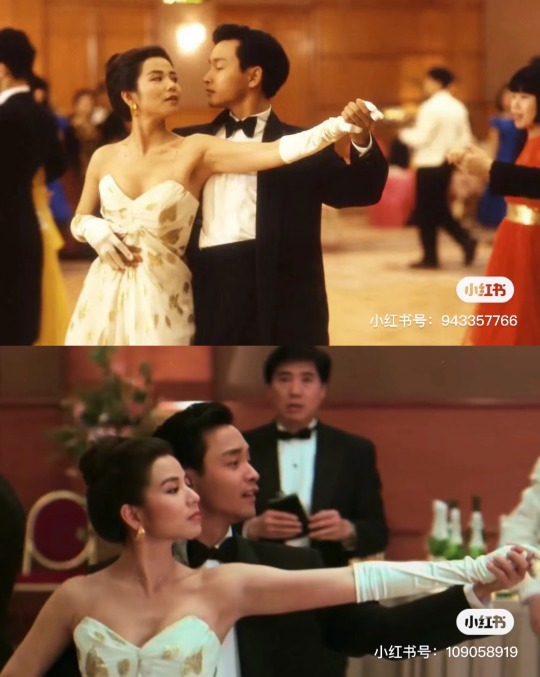
The 2000s
Shu Qi

The 2010s
Wang Kai

Ma Sichun

The 2020s
Liu Xueyi



5 notes
·
View notes
Photo

Picture Play, April 1934
#katharine hepburn#joan crawford#jean harlow#clark gable#franchot tone#cary grant#george brent#george raft#kay francis#alice brady#irene dunne#ann harding#miriam hopkins#elissa landi#ronald colman#leslie howard#walter huston#charles laughton#david manners#fredric march#herbert marshall#robert montgomery#king kong#magazine: picture play#year: 1934#decade: 1930s#type: fan mail#pp vol. 40 no. 2
76 notes
·
View notes
Text










Cdrama: Blooming (2023)
Gifs of Intro of cdrama "Blooming"
[Blooming] EP01 | Costume Romcom | Fang Yilun/Huang Riying | YOUKU
Watch this video on Youtube: https://www.youtube.com/watch?v=_gRZSNY0Sfw



#Blooming#一念花开#Shi Xiong Zong Shi Yao Kai Hua#Xin Shi Lian Hua Kai#心是莲花开#師兄總是要開花#心是蓮花開#师兄总是要开花#一念花開#2023#cdrama#chinese drama#Youku#web serie#1st episode#episode 1#Alen Fang#Fang Yi Lun#Huang Ri Ying#Leslie Ma#Qiu Shi Lun#Wu Yi Jia#Fei Long#Yang Jin Cheng#Liu Shu Yuan
6 notes
·
View notes
Text
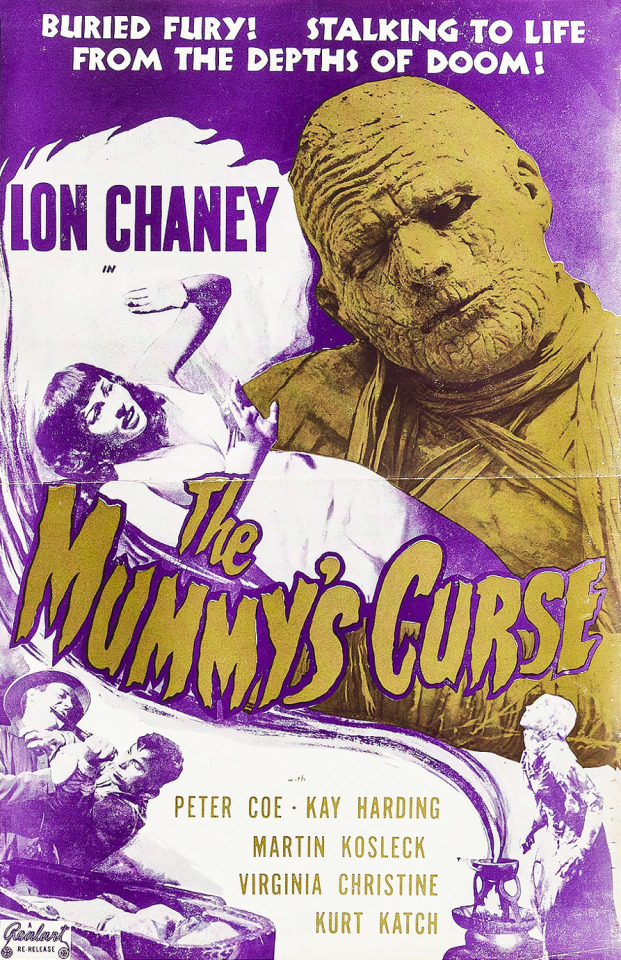
The Mummy's Curse (1944) - Pressbook
#the mummy's curse#lon chaney jr.#kay harding#virginia christine#martin kosleck#1940s movies#1944#1940s horror#leslie goodwins#universal monsters#universal horror#classic horror#pressbook
51 notes
·
View notes
Text

sketch page!
#a lot of random characters#as i like to do#sketch page#roxanne goofy movie#rapunzel#merida#moana#rotbtd#hiccup haddock#astrid#httyd#tangled#parks and rec#leslie knope#my ocs#O kAY that’s everyone#snvwflake
82 notes
·
View notes
Text



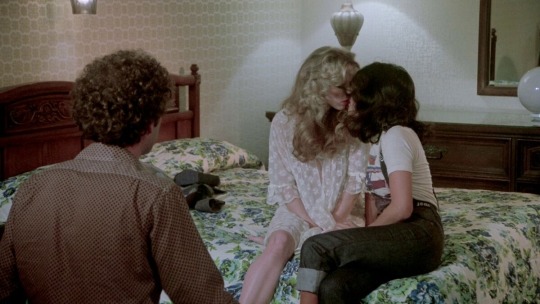

Sex World
#vintage#adultmovies#adult actress#golden age of adult cinema#70s movies#kay parker#annette haven#Leslie bovee#Desiree West#john leslie#movie podcast#movie review
118 notes
·
View notes
Photo


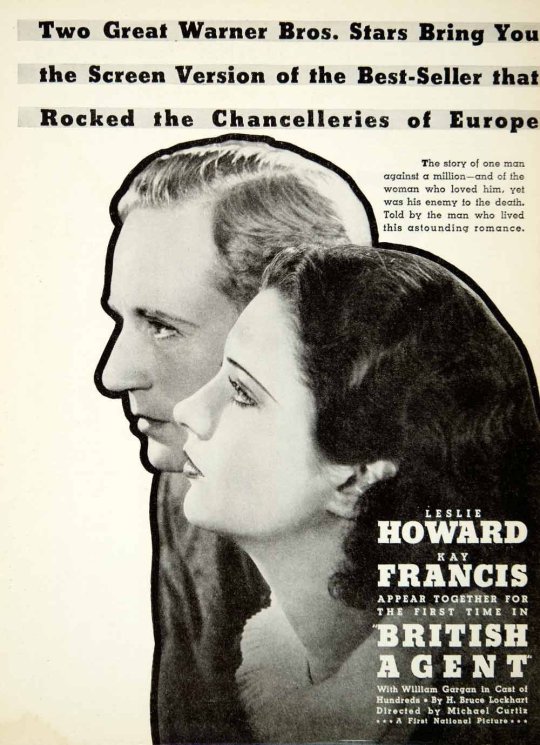
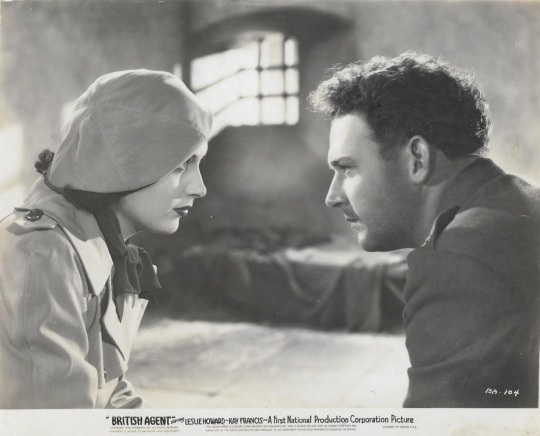
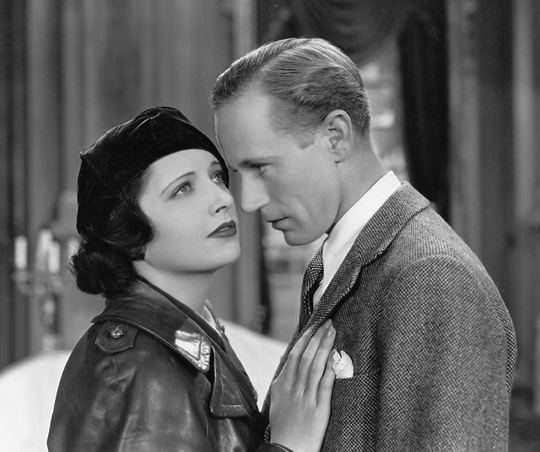

British Agent (1934) Michael Curtiz
January 14th 2023
#british agent#1934#michael curtiz#leslie howard#kay francis#william gargan#irving pichel#ivan f. simpson#phillip reed#cesar romero
13 notes
·
View notes
